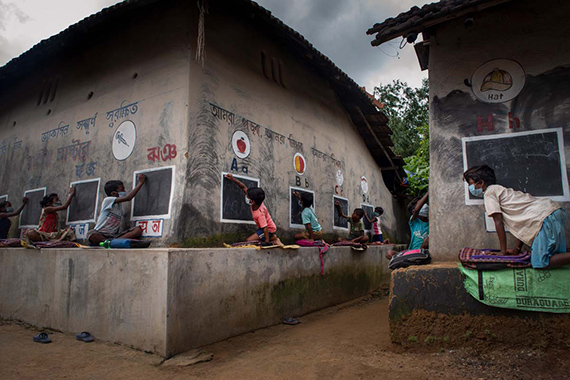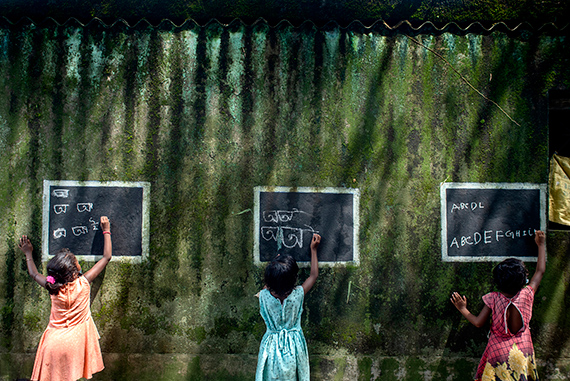
Global Peace Photo Award 2022
Ana María Arévalo Gosen » Sourav Das » Maryam Firuzi » Mary Gelman » Artem Humilevskiy »
Award:
Mon 14 Nov

GLOBAL PEACE PHOTO AWARD
Dumbagasse 9
2500 Baden
+43 (0)699-13583989
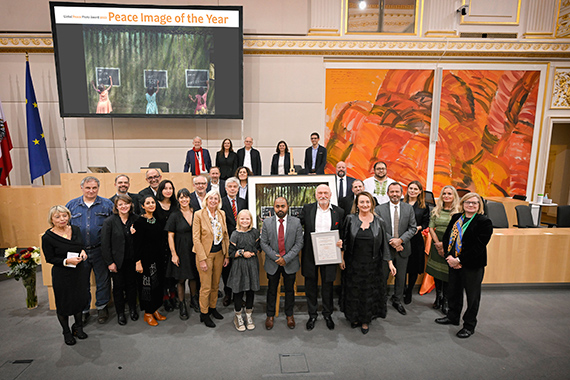
Sourav Das wins the „Peace Image of the Year“ at the Global Peace Photo Award 2022.
The Indian photographer wins with an image from his reportage "A Small yet Great Victory Over the Pandemic", which tells how during the global Corona-related education emergency, the initiative of Indian teacher Deepnarayan Nayak turned the walls of his village's houses into school blackboards.
The evening's keynote address was given by Alexander Cherkasov, representing the Memorial Human Rights Centre, which will receive the Nobel Peace Prize in Oslo on 10 December 2022.
Vienna, 14 November 2022 – this evening, the winners of the international Global Peace Photo Award competition were awarded the Alfred Fried Peace Medal at the Austrian Parliament for the tenth time.
Winners of the Global Peace Photo Award 2022
Ana Maria Arévalo Gosen, Venezuela for "Sinfonía desordenada"Artem Humilevski, Ukraine for "Giant“
Mary Gelman, Russia for: "M+T"
Maryam Firuzi, Iran for "The Scattered Memories of Distorted Future"
Sourav Das, India for "A Small yet Great Victory Over the Pandemic"
In his welcoming speech, Wolfgang Sobotka, President of the Austrian National Council, emphasised the extraordinary cooperation with the Global Peace Photo Award and how important it is to provide a forum for peace in these times. In the future, this commitment will be even more noticeable in the Austrian Parliament. The pictures of the award winners will be shown in the auditorium for one year at a time. This is the room where mainly the press conferences will take place.
The Peace Image of the Year 2022
The main prize of 10,000 euros went to the Indian photographer Sourav Das with an image from his reportage "A Small yet Great Victory Over the Pandemic", which reports on how, during the worldwide Corona-related education emergency, the initiative of the Indian teacher Deepnarayan Nayak turned the walls of the houses in his village into school blackboards.
For millions of girls and boys covid meant no schooling of any kind for months. And for countless other children this is still, or again, true. Already it has become sadly clear: covid has created an educational emergency across the world, which goes beyond the loss of learning the times table. In many poorer countries closing the schools also means that children forego their only certain meal of the day. But there were and still are wonderful exceptions! These are initiatives like that of Indian teacher Deepnarayan Nayak, who just moved the school in his village outdoors. He turned the walls of the houses into boards. He painted the precautions against infection on the walls, he teaches the children how to use masks and makes them attend school outdoors in safe distance to each other, even the subject of biology, including the look through a microscope. Indian photographer Sourav Das has captured everyday scenes of this unusually creative and loveable village school. He has created a small monument to this peaceful action. It realizes, on the lowest conceivable level, one of the 54 articles of the UN Convention on the Rights of the Child: the right of access to education.
Sourav Das, born in 1987, calls his camera an instrument of learning. He refers to famous Henri Cartier-Bresson when he says: With one eye you look at the world, with the other into yourself. In 2011 Das obtained a Master of Arts, then focused on photography. He sees himself as a street photographer, he wants to document social change in his society. He trusts photography to be as expressive as a novella, a song or a painting.
The Children’s Peace Image of the Year 2022
The best peace image in the children’s and youth category, Children’s Peace Image of the Year 2022, worth 1000 euros, was won by 10 year old Zoya Yeadon from Mauritius.
"Floating, not drowning. Surrounded by dancing light and a deep blue. Dreaming in a peaceful sea. Zoya Yeadon is a strong swimmer. But that is the most unspectacular thing you can say about her. Born in Mauritius, she really is, as her father (also in the picture) says, “a nomad at heart”. Curious about the world. She has spent the last five years in a mobile home in which she has travelled through more than 80 countries. She is being taught within a program of Wolsey Hall Oxford, a home-schooling college, maybe the most famous, certainly one of the oldest schools of its type, founded in 1894. Her best subjects? Geography, of course. And maths and English. Apart from her mother tongue, Zoya also has a good command of Russian and French. Her father describes her as “surprisingly resilient” and “steadfast in a crisis”. Cheerful and fearless – for instance, when she talks about her travels in front of 120 children and adults. Zoya uses a Leica of her father’s to take photographs. And if it existed, we would have to present Zoya with an additional award. She certainly has travelled furthest of all the award winners to be here on this beautiful evening. Landing in Dubai, she started out for Vienna on 10 October. In her father’s car, via Saudi-Arabia, Jordan, Israel, then on the ferry to Greece…“, says laudator Peter-Matthias Gaede.
The award was presented by Elisabeth Stadler, General Manager and Chairwoman of the Managing Board of Vienna Insurance Group (VIG): "Vienna Insurance Group has been a supporter of the Global Peace Photo Award since the very beginning and has previously supported the Children's Peace Photo Award. Now we are expanding our successful cooperation and have signed a three-year cooperation agreement as the main sponsor. As a company, we - like people - need a peaceful environment to be able to do business sustainably and successfully."
Lois Lammerhuber, who initiated the Global Peace Photo Award together with his wife Silvia Lammerhuber and has organised it since the beginning, reminded us that "peace is not the absence of war, but something I would like to call 'successful living'. Every year the photos and stories submitted touch us anew with their creativity and passion for what is good and peaceful in this world."
Invited by Barbara Trionfi, outgoing Director of the International Press Institute (IPI), Joanna Krawcyk, President of the Gazeta Wyborcza Foundation, Chairwoman of the Leading European Newspaper Alliance and "Golden Pen of Press Freedom" awardee, made a plea for the value of photography in the perception of the world: "What we are clearly witnessing now is an intensification of visual culture, photography has become extremely important as a vehicle of change and a means of protest. Describing the world with images in a pluralistic media environment can only work in societies guided by freedom of information and expression. That is a core element of any functioning democracy - freedom of the media, and I see it as essential to the protection of human rights."
Ten years of Global Peace Photo Award
Peter-Matthias Gaede, Editor-in-Chief of GEO magazine 1994 - 2014, paid tribute to the 10th anniversary of the Global Peace Photo Award: "In the ten years of its existence, the Global Peace Photography Award has grown in size in almost every field.
The jury has become a large orchestra. 29 women and men from nine nations now belong to it - from six European countries, but also from Latin America, China and the USA. The submissions of about 15,000 pictures a year come from around 120 countries. The winners come from Iran and the USA, Belgium, Sweden and Germany, China and Indonesia, Nigeria, Ghana, Turkey, Tunisia, Argentina, Peru and Venezuela. From Greece, Italy, France, the Netherlands and Denmark. From Ukraine. And Russia.
Only apparently lured by a compelling idea, the annual awards have become a summit of globally recognised advocates of peace and human rights. I recall the speech by Kailash Satyarthi, child rights activist and Nobel Peace Prize winner of 2014, or Tunisian Abdessattar Ben Moussa, human rights activist and Nobel Peace Prize winner of 2015, who gave us the honour of delivering the keynote address at the ceremony. I recall David Beasley, Executive Director of the United Nations World Food Programme, winner of the Nobel Peace Prize in 2020, who came all the way from the United States to give a resounding hello-wake-up call to the world. And we are very pleased that with Alexander Cherkasov, member of the board of Memorial, we once again have with us today the representative of an institution that has just been awarded the Nobel Peace Prize 2022.
But I would also like to remind you of the courageous advocates of press freedom who have spoken to us here - in the person of Matthew Caruana Galizia, the son of the Maltese journalist Daphne Caruana Galizia, who was murdered in 2017. I recall the memento mori that we owe to the cooperation of the IPI, arguably the world's most important institution for the defence of press freedom. To my knowledge, there is no other photography prize in the world that is able to animate such a high-profile and credible human rights community of people from all nations to pay tribute to photographers who were often even previously widely unknown."
Nobel Peace Prize Laureates
The evening's keynote address was given by Alexander Cherkasov, representing the Memorial Human Rights Centre, which will receive the 2022 Nobel Peace Prize in Oslo on 10 December, together with the Center of Civil Liberties from Ukraine - whose chairperson Oleksandra Matviichuk had sent a video message - and Belarusian dissident and human rights activist Ales Bjalyazki.
"Indeed, Memorial has spent many years trying to do something similar to the laureates at today's ceremony: to record the past, the totalitarian past of Russia and Europe in the twentieth century, the century of totalitarian empires, to prevent it from happening again. Never again. What kind of memory is needed for this? What was worth preserving to prevent a repeat? The memory of the victims, of course. And another memory - the experience of living in dignity under unimaginable circumstances. The memory of resistance. And also: to remember, of course, is to fight. Fighting against the impunity of criminals. (...) So the Human Rights Centre dealt with contemporary human rights violations in the post-Soviet wars. We documented, we helped, we demanded justice. (...) A life in search of meaning. The enlightenment of hearts. I think this is the right way. That is exactly what you are doing too. Through the magic of photography, through the magic of light, you stop the moment. With a flash of light, you illuminate people's souls. I would like to think that we are pursuing a common cause." - Download the transcript of Cherkasov's speech here: http://press.lammerhuber.at/gppa2022
About the Global Peace Photo Award 2022
14,157 images from 115 countries were submitted for the Global Peace Photo Award 2022. Most of the submissions came from China, Russia, India, the USA and Iran. The submissions were judged by a distinguished international jury. See: https://www.friedaward.com/jury
The Global Peace Photo Award is organized by Edition Lammerhuber and Photographische Gesellschaft (PHG) in partnership with UNESCO, Austrian Parliament, Austrian Parliamentary Reporting Association, International Press Institute (IPI), German Youth Photography Award, World Press Photo Foundation, POY LATAM, LensCulture and Vienna Insurance Group.
The prize was inspired by the Austrian pacifist and writer Alfred Hermann Fried (* 11 November 1864 in Vienna; † 4 May 1921 in Vienna). Fried was awarded the Nobel Peace Prize in 1911 together with the organiser of the Hague Conference on Private International Law Tobias Asser.
Download press material (Winning images, jury statements, photos from the award ceremony): http://press.lammerhuber.at/gppa2022
For further information, please contact:
Lois Lammerhuber +4369913583989
lois.lammerhuber@friedaward.com
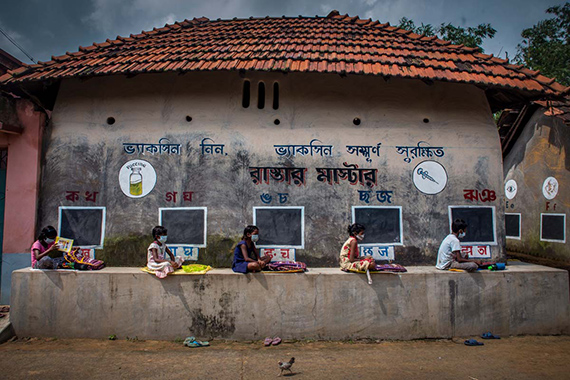
Sourav Das beim Global Peace Photo Award 2022 für das "Friedensbild des Jahres" ausgezeichnet.
Der indische Fotograf siegt mit einem Bild aus seiner Reportage "A Small yet Great Victory Over the Pandemic" – Ein kleiner, großer Sieg über die Pandemie", das darüber berichtet, wie während des weltweiten Corona bedingten Bildungsnotstandes die Initiative des indischen Lehrers Deepnarayan Nayak die Wände der Häuser seines Dorfes in Schultafeln verwandelte.
Die Keynote des Abends hielt Alexander Cherkasov, der das Memorial Human Rights Centre repräsentiert, das am 10. Dezember 2022 in Oslo den Nobel Peace Prize erhalten wird.
Wien, 14. November 2022: am Abend wurden zum zehnten Mal die Gewinner:innen des internationalen Fotowettbewerbs Global Peace Photo Award im Österreichischen Parlament mit der Alfred-Fried-Friedensmedaille ausgezeichnet.
Preisträger:innen des Global Peace Photo Awards 2022
Ana Maria Arévalo Gosen aus Venezuela für "Sinfonía desordenada – eine wilde Sinfonie"
Artem Humilevski aus der Ukraine für "Giant. Riese."
Mary Gelman aus Russland für: "Minya und Tatjana"
Maryam Firuzi aus dem Iran für "The scattered memories of distorted future – die verstreuten Erinnerungen einer "verzerrten" (ungewissen?) Zukunft"
Sourav Das aus Indien für "A Small yet Great Victory Over the Pandemic" – Ein kleiner, großer Sieg über die Pandemie
In seiner Begrüßung betonte Wolfgang Sobotka, der Präsident des Österreichischen Nationalrates, die außergewöhnliche Zusammenarbeit mit dem Global Peace Photo Award und wie wichtig es ist, in diesen Zeiten dem Frieden ein Forum zu bieten. Dieses Bekenntnis wird in Zukunft auch im Österreichischen Parlament noch deutlicher spürbar sein. Die Bilder der Preisträger werden im Auditorium für jeweils ein Jahr gezeigt. Das ist jener Raum, in dem vorwiegend die Pressekonferenzen stattfinden werden.
Peace Image of the Year 2022
Der mit 10 000 Euro dotierte Hauptpreis "Peace Image of the Year 2022" ging an den indischen Fotografen Sourav Das für seine Reportage, die darüber berichtet wie während des weltweiten Corona bedingten Bildungsnotstandes die Initiative des indischen Lehrers Deepnarayan Nayak die Wände der Häuser seines Dorfes in Schultafeln verwandelte.
Für Millionen Mädchen und Jungen hat Corona bedeutet, dass sie oft über Monate hinweg keinerlei Schule mehr besuchen konnten. Corona hatte einen weltweiten Bildungsnotstand geschaffen, der mehr war als ein Verlust im Erlernen des kleinen Ein-mal-eins: In vielen armen Ländern bedeutete das Schließen der Schulen auch, dass Kinder die einzige feste Mahlzeit am Tag nicht mehr bekommen haben. Aber es gab auch wunderbare Ausnahmen! Es gab Initiativen wie jene des indischen Lehrers Deepnarayan Nayak, der die Schule in seinem Dorf kurzerhand ins Freie verlegte. Er hat die Wände der Häuser in Schultafeln verwandelt. Er hat die Vorsichtsmaßnahmen gegen eine Infektion auf die Wände gemalt,
er lehrte die Kinder im Umgang mit Masken und ließ sie in Sicherheitsabständen Schule im Freien absolvieren, selbst das Fach Biologie inklusive eines Blickes durchs Mikroskop. Der indische Fotograf Sourav Das hat Szenen aus dem Alltag dieser ungewöhnlich kreativen und liebenswerten Dorfschule eingefangen. Er hat dieser friedvollen Aktion ein kleines Denkmal gesetzt. Und auf kleinster denkbarer Ebene ist hier einer der 54 Artikel der UN-Kinderrechtskonvention umgesetzt: das Recht auf Bildung.
Sourav Das, geboren 1987, bezeichnet übrigens auch seine Kamera als ein Instrument des Lernens. Er beruft sich dabei auf den berühmten Fotografen Henri Cartier-Bresson, wenn er sagt: "Mit einem Auge schaust du auf die Welt, mit dem anderen in dich selbst hinein." 2011 hat Das einen Master in Arts gemacht, sich danach auf die Fotografie konzentriert. Er versteht sich als "street photographer", will sozialen Wandel in seiner Gesellschaft dokumentieren. Der Fotografie traut er dabei zu, ähnlich aussagekräftig zu sein wie eine Novelle, ein Lied oder ein Gemälde.
The Children’s Peace Image of the Year 2022
Das mit 1000 Euro dotierte beste Friedensbild in der Kinder- und Jugendkategorie, "The Children’s Peace Image of the Year 2022", gewann die 10-jährige Zoya Yeadon
aus Mauritius.
Ihr Foto "Dreaming in the Peaceful Sea” zeigt das von Lichtreflexen und Blau umgebene scheinbar schwerelose Schweben und Träumen in einer friedlichen See. Zoya Yeadon ist eine gute Schwimmerin. Aber das ist nun das Unspektakulärste, was sich über sie sagen lässt. Auf Mauritius geboren, ist sie eigentlich, wie ihr Vater sagt, "im Herzen eine Nomadin". Neugierig auf die Welt. Die letzten fünf Jahre hat sie in einem Wohnmobil verbracht, dabei mehr als 80 Länder bereist. Unterrichtet wird sie in einem Programm der Wolsey Hall Oxford, einem homeschooling college, vielleicht der berühmtesten, mindestens einer der ältesten Schulen dieser Art, 1894 gegründet.
Lois Lammerhuber, der gemeinsam mit seiner Frau Silvia Lammerhuber den Global Peace Photo Award initiiert und seit Anbeginn organisiert hat, erinnerte daran, dass
"Frieden nicht die Abwesenheit von Krieg ist, sondern etwas, das ich als "Gelungenes Leben" bezeichnen möchte. Jedes Jahr berühren uns die eingereichten Fotos und Geschichten aufs Neue mit ihrer Kreativität und Passion für das Gute und Friedvolle auf dieser Welt."
Auf Einladung von Barbara Trionfi, der scheidenden Direktorin des International Press Institute (IPI), hielt Joanna Krawcyk, Präsidentin der Gazeta Wyborcza Foundation, Chairwoman of the Leading European Newspaper Alliance und "Golden Pen of Press Freedom"-Preisträgerin, ein Plädoyer für den Wert der Fotografie in der Wahrnehmung der Welt: "Was wir jetzt eindeutig erleben, ist eine Intensivierung der visuellen Kultur, Fotografie ist als Vehikel des Wandels und als Mittel des Protests außerordentlich wichtig geworden. Die Beschreibung der Welt mit Bildern in einem pluralistischen Medienumfeld kann nur in Gesellschaften funktionieren, die von Informations- und Meinungsfreiheit geleitet werden. Das ist ein Kernelement jeder funktionierenden Demokratie – die Medienfreiheit, und ich sehe sie als wesentlich für den Schutz der Menschenrechte."
Zehn Jahre Global Peace Photo Award
Peter-Matthias Gaede, Chefredakteur der Zeitschrift GEO 1994 – 2014, würdigte das 10-jährige Bestehen des Global Peace Photo Award: "In den nun zehn Jahren seines Bestehens hat der Global Peace Photography Award an Größe auf nahezu jedem Feld gewonnen.
Die Jury ist großes Orchester geworden. 29 Frauen und Männer aus neun Nationen gehören ihr mittlerweile an – aus sechs europäischen Ländern, aber auch aus Lateinamerika, China und den USA. Die Einsendungen von jährlich etwa 15 000 Bildern kommen rund 120 Ländern. Die Gewinner:innen stammen aus dem Iran und aus den USA, aus Belgien, Schweden und Deutschland, aus China und Indonesien, Nigeria, Ghana, Türkei, Tunesien, Argentinien, Peru und Venezuela. Aus Griechenland, Italien, Frankreich, den Niederlanden und Dänemark. Aus der Ukraine. Und Russland.
Einzig offenbar von einer überzeugenden Idee angelockt, sind die alljährlichen Verleihungen zu einem Gipfeltreffen weltweit anerkannter Vertreter des Friedens und der Menschenrechte geworden. Ich erinnere an die Rede von Kailash Satyarthi, Kinderrechts-Aktivist und Friedensnobelpreis-Träger des Jahres 2014, oder an den Tunesier Abdessattar Ben Moussa, Menschenrechts-Aktivist und Friedensnobelpreis-Träger des Jahres 2015, der uns die Ehre gab, die Hauptrede zur Verleihung zu halten. Ich erinnere an David Beasley, Exekutivdirektor des 2020 mit dem Friedensnobelpreis ausgezeichneten Welternährungs-programm der Vereinten Nationen, der eigens aus den USA kam, um einen fulminanten Hallo-Wacht-auf-Ruf an die Welt zu richten. Und wir freuen uns sehr, dass wir mit Alexander Cherkasov, Vorstandsmitglied von Memorial, auch heute wieder den Vertreter einer mit ganz aktuell mit dem Friedensnobelpreis 2022 ausgezeichneten Institution bei uns haben.
Aber ich erinnere auch an mutige Verfechter:innen der Pressefreiheit, die hier zu uns gesprochen haben – in Person des Sohnes der 2017 ermordeten maltesischen Journalistin Daphne Caruana Galizia, an Matthew Caruana Galizia. Ich erinnere an das memento mori, das wir der Kooperation mit dem IPI, der weltweit wohl wichtigsten Institution zur Verteidigung der Pressefreiheit verdanken. Meines Wissens gibt es keinen zweiten Fotopreis auf der Welt, der es vermag, eine derart hochkarätige und glaubwürdig für die Menschenrechte eintretende Gemeinschaft aus Menschen aller Nationen zu animieren, den oft sogar zuvor weithin unbekannten Fotografen und Fotografinnen die Ehre zu erweisen."
Friedensnobelpreis-Organisationen zu Gast
Die Keynote des Abends hielt Alexander Cherkasov, der das Memorial Human Rights Centre repräsentierte, das am 10. Dezember in Oslo den Nobel Peace Prize 2022 erhalten wird, gemeinsam dem Center of Civil Liberties aus der Ukraine – dessen Vorsitzende Oleksandra Matviichuk eine Videobotschaft geschickt hatte – und dem belarussischen Dissidenten und Menschenrechtler Ales Bjaljazki. "In der Tat hat Memorial viele Jahre lang versucht, etwas Ähnliches zu tun wie die Preisträger der heutigen Zeremonie: Die Vergangenheit aufzuzeichnen, die totalitäre Vergangenheit Russlands und Europas im zwanzigsten Jahrhundert, das Jahrhundert der totalitären Imperien, um zu verhindern, dass dies wieder geschieht. Nie wieder.
Welche Art von Speicher wird dafür benötigt? Was war es wert, bewahrt zu werden, um eine Wiederholung zu verhindern? Das Gedenken an die Opfer natürlich. Und eine weitere Erinnerung – die Erfahrung, unter unvorstellbaren Umständen in Würde zu leben. Das Gedächtnis des Widerstands. Und außerdem: Sich zu erinnern, heißt natürlich zu kämpfen. Kampf gegen die Straflosigkeit von Kriminellen. (…) Das Menschenrechtszentrum beschäftigte sich also mit zeitgenössischen Menschenrechtsverletzungen in den postsowjetischen Kriegen. Wir haben dokumentiert, wir haben geholfen, wir haben Gerechtigkeit gefordert. (…) Ein Leben auf der Suche nach Sinn. Die Erleuchtung der Herzen. Ich denke, das ist der richtige Weg. Das ist genau das, was auch Sie tun. Durch die Magie der Fotografie, durch die Magie des Lichts halten Sie den Moment an. Mit einem Blitzlicht erleuchten Sie die Seelen der Menschen. Ich würde gerne glauben, dass wir eine gemeinsame Sache verfolgen." – Hier ist der Link zu Cherkasovs Rede: LINK
Über den Global Peace Photo Award 2022
Zum Global Peace Photo Award 2022 wurden 14.157 Bilder aus 115 Ländern eingereicht. Die meisten Einreichungen kamen aus China, Russland, Indien, USA und dem Iran. Juriert wurden die Einreichungen von einer hochkarätigen, internationalen Jury. Siehe: www.friedaward.com/jury
Neben der Vergabe des "Friedensbild des Jahres" an Sourav Das gingen Alfred-Fried-Friedensmedaillen 2022 an: Ana Maria Arévalo Gosen, Artem Humilevski, Mary Gelman und Maryam Firuzi.
Der Global Peace Photo Award wird in Kooperation von Edition Lammerhuber, Photographischer Gesellschaft (PHG), UNESCO, Österreichischem Parlament, der Vereinigung der Parlamentsredakteurinnen und -redakteure, des Internationalen Press Institute (IPI), des Deutschen Jugendfotopreises, World Press Photo Foundation, POY LATAM, LensCulture und Vienna Insurance Group ausgelobt.
Inspiriert wurde der Preis von dem österreichischen Pazifisten und Schriftsteller Alfred Hermann Fried (* 11. November 1864 in Wien; † 4. Mai 1921 in Wien). Fried wurde 1911 gemeinsam mit dem Organisator der Haager Konferenz für Internationales Privatrecht Tobias Asser der Friedensnobelpreis verliehen.
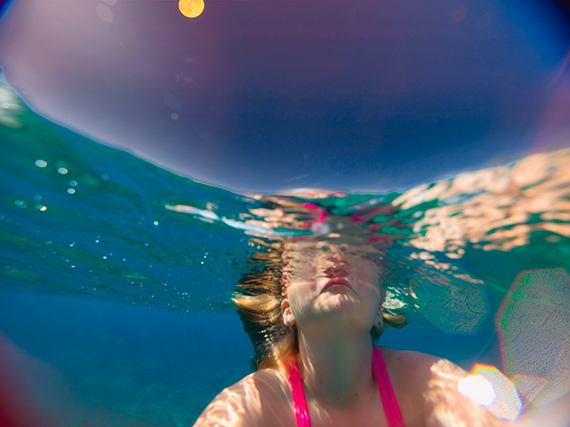
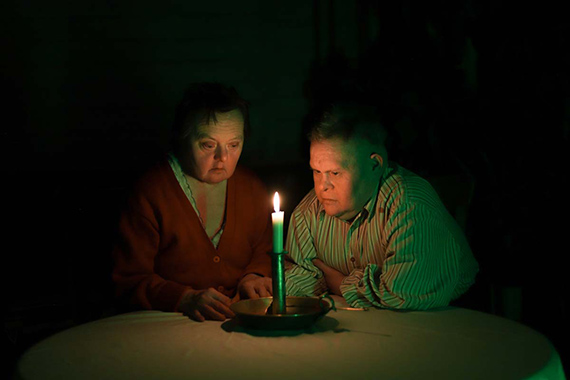
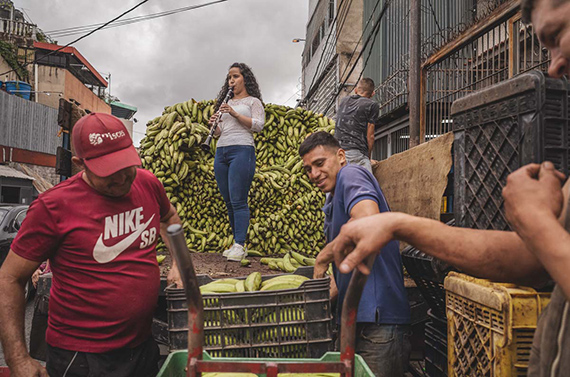
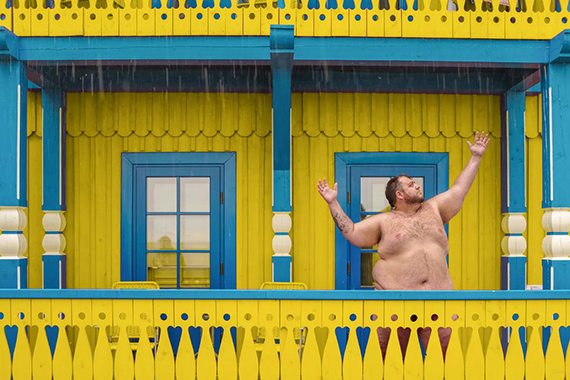
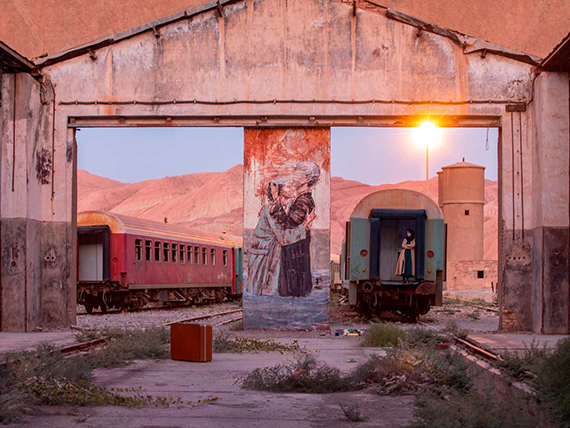
"The scattered memories of distorted future – die verstreuten Erinnerungen einer "verzerrten" (ungewissen?) Zukunft"
